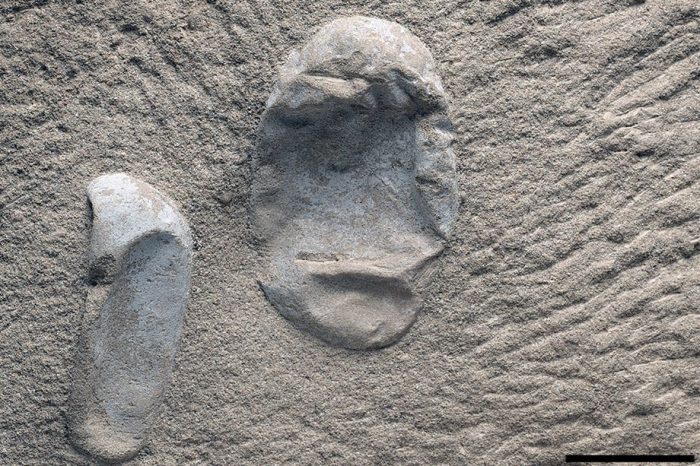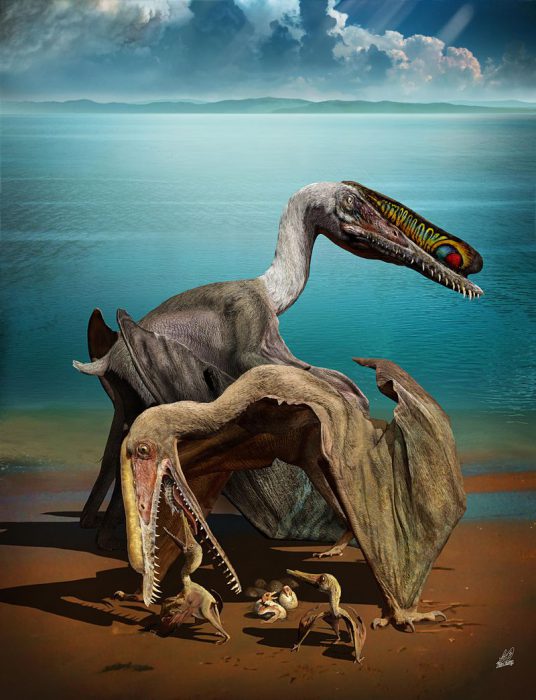Once again, China is the site of an unbelievable fossil discovery.
As we've been reporting, the country has been on an amazing roll lately, with groundbreaking fossils showing everything from prehistoric gliding mammals, dinosaur feathers in amber, and blue dino eggs. And now, there's a new find that paleontologists should definitely keep a secret from this egg-crazy town...
A clutch of 215 extremely well-preserved pterosaur eggs! Around the world, scientists are using words like "awesome", "stellar", and even claiming "extreme jealousy" to describe the find. Let's look at why.
Before this, there were six
A skull of the Hamipterus tianshanensis. (Getty Embed)
Pterosaurs were prehistoric flying reptiles that lived during the same time as dinosaurs. They also went extinct at the same time, around 66 million years ago. They varied greatly in size, from the songbird-sized Nemicolopterus to the massive Quezalcoatlus, which was the largest flying animal to have ever lived.
The species in this discovery was the Hamipterus tianshanensis. It was quite large, about the size of an albatross, with a prominent crest on its upper beak. But the biggest thing about this story is definitely not the size of the reptile.
It's the number of eggs.
Prior to this find, scientists had only discovered a very small total number of pterosaur eggs of any species. And a mere six of them had not been flattened by time and pressure (or were still three-dimensional). Now they have 215 of them! And as many as 300 more might still lay within the rock.
A look inside the egg

One of the many beautifully preserved eggs. (Alexander Kellner/Museu Nacional/UFRJ)
A big reason why scientists are so thrilled about the eggs not being crushed flat is that several of these eggs still contain embryos, or unhatched baby pterosaurs. It gives researchers the chance to not only observe the embryos at different stages of development, but to also compare them to each other. No matter what a scientist is researching, the larger the sample size, the more accurate the results.
And though this research will still take years to complete, this one find should help better answer a number of questions about these animals.
- What were the stages of development inside the egg like the pterosaurs?
- Did pterosaurs have communal nesting sites, like modern penguins do?
- Could these animals fly at birth?
No wonder scientists are so excited!
 Hamipterus tianshanensis is the species that these eggs belong to. (Zhao Chaung)
Hamipterus tianshanensis is the species that these eggs belong to. (Zhao Chaung)










Sooooo mystery!!!!!!! 🙂
Hi again Jacob